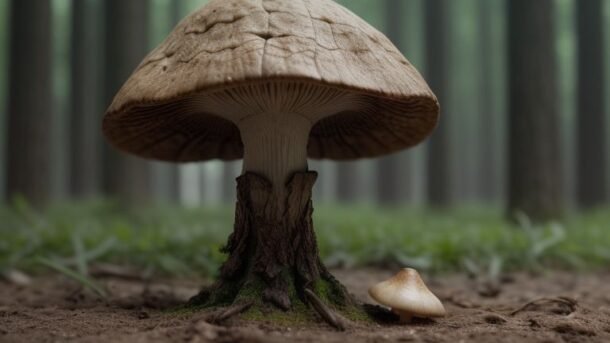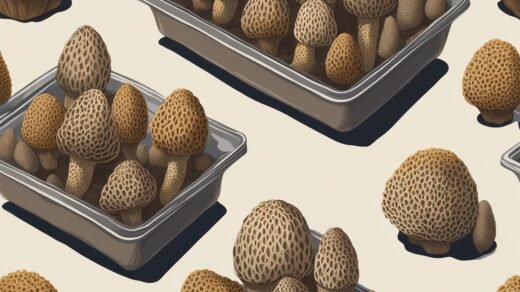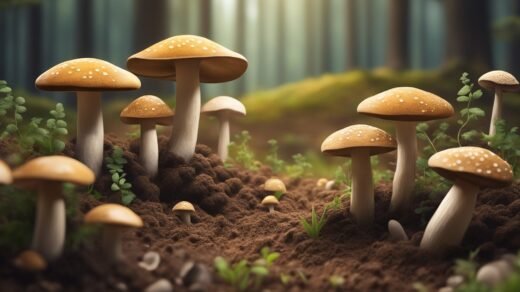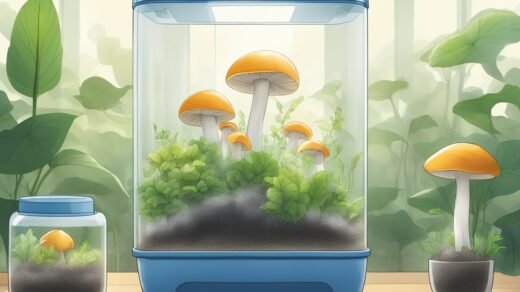Growing your own psilocybin mushrooms can be a rewarding and fulfilling experience. Not only do you get to enjoy the fruits of your labor, but you also have complete control over the growing process, ensuring that your mushrooms are of the highest quality and potency. However, it’s important to note that growing psilocybin mushrooms is illegal in many countries, so it’s essential to research the laws in your area before attempting to grow them.
If you live in a country where growing psilocybin mushrooms is legal, or if you’re willing to take the risk, there are several methods you can use to grow your own mushrooms. One of the most popular methods is the PF Tek method, which involves growing mushrooms in jars filled with a nutrient-rich substrate. This method is relatively easy to follow and requires minimal equipment, making it ideal for beginners.
Another popular method is the monotub method, which involves growing mushrooms in a large container known as a monotub. This method is more advanced than the PF Tek method and requires more equipment, but it allows for larger yields and more control over the growing environment. Regardless of which method you choose, it’s important to follow the instructions carefully and take the necessary precautions to ensure a successful harvest.
Understanding Psilocybin Mushrooms
Psilocybin mushrooms, also known as magic mushrooms, are fungi that contain the psychoactive compound psilocybin. This chemical acts on serotonin receptors in the brain to produce psychedelic effects, commonly known as a trip.
Psilocybin mushrooms have been used for centuries in spiritual and religious practices, and are currently being studied for their potential therapeutic benefits in treating depression, anxiety, and addiction.
It’s important to note that psilocybin mushrooms are illegal in most countries, including the United States. Therefore, growing them for personal use carries legal risks.
Psilocybin mushrooms come in various species, each with their own unique characteristics. Some of the most common species include Psilocybe cubensis, Psilocybe semilanceata, and Psilocybe mexicana.
When growing psilocybin mushrooms, it’s important to choose the right species and strain for your desired effects. Different strains can produce different levels of psilocybin and other compounds, leading to variations in potency, duration, and overall experience.
Overall, psilocybin mushrooms can be a powerful tool for personal growth and exploration, but it’s important to approach them with caution and respect. Proper research, preparation, and harm reduction measures can help ensure a safe and positive experience.
Preparation
Before beginning the process of growing psilocybin mushrooms, it is important to prepare the necessary materials and create a sterile environment. This will help ensure a successful and healthy mushroom crop.
Gathering Materials
The following materials are essential for growing psilocybin mushrooms:
- Spores or a mushroom grow kit
- Substrate (such as brown rice flour, vermiculite, and perlite)
- Mason jars or Unicorn bags
- Pressure cooker or stovetop sterilizer
- Gloves and face mask
- Spray bottle
- Plastic storage bin or grow tent
It is important to obtain high-quality spores or a reliable mushroom grow kit from a reputable supplier. The substrate should be free of contaminants and properly hydrated before use. Mason jars or Unicorn bags should be sterilized before use to prevent contamination.
Creating a Sterile Environment
To create a sterile environment, it is recommended to work in a clean and well-lit area. The following steps can help ensure a sterile environment:
- Clean and disinfect all surfaces and equipment with a 70% alcohol solution.
- Wear gloves and a face mask to prevent contamination.
- Use a pressure cooker or stovetop sterilizer to sterilize the substrate and Mason jars or Unicorn bags.
- Use a spray bottle filled with a 70% alcohol solution to mist the air and surfaces.
- Use a plastic storage bin or grow tent to create a controlled environment for the mushrooms to grow.
By following these preparation steps, growers can increase the likelihood of a successful and healthy mushroom crop.
Inoculation
Inoculation is the process of introducing spores into a substrate to initiate the growth of psilocybin mushrooms. This process involves two main steps: preparing the substrate and injecting the spores.
Preparing the Substrate
The substrate is the growing medium in which the spores will develop into mushrooms. Common substrates include coco coir, vermiculite, and sphagnum. Before inoculation, the substrate must be sterilized to kill any competing bacteria or fungi. This can be done by placing the substrate in a pressure cooker or by using a microwave.
Once the substrate is sterilized, it can be mixed with the spores. It is important to use sterile techniques during this step to avoid contamination. A popular method is to mix the substrate and spores in a plastic bag and then seal it.
Injecting the Spores
The spores can be injected into the substrate using a syringe. The syringe should be sterilized before use and the spores should be mixed with sterile water. The spore solution should be injected into the substrate at various points to ensure even distribution.
After injecting the spores, the substrate should be sealed and kept in a warm, dark place. The spores will begin to grow and form mycelium, which will eventually develop into mushrooms.
It is important to monitor the growth of the mushrooms and adjust the environment as needed. This includes maintaining proper humidity and temperature levels and providing adequate airflow.
Overall, inoculation is a crucial step in growing psilocybin mushrooms. By following proper techniques and using sterile equipment, growers can increase their chances of a successful harvest.
Cultivation
Growing psilocybin mushrooms at home requires a few key steps to ensure success. Here are the basic steps to follow:
Incubation
The first step in growing psilocybin mushrooms is to prepare the substrate, or the material the mushrooms will grow on. This can be done using a variety of materials, such as brown rice flour, vermiculite, and perlite. Once the substrate is prepared, it is sterilized to kill any bacteria or other contaminants that could interfere with mushroom growth.
After sterilization, the substrate is inoculated with spores or mycelium, which will begin to grow and colonize the substrate. This process is known as incubation and typically takes several weeks to complete. During this time, it is important to maintain a consistent temperature and humidity level to encourage optimal growth.
Fruiting
Once the substrate has been fully colonized, the next step is to encourage the mushrooms to fruit, or produce fruiting bodies. This is done by moving the substrate to a fruiting chamber, which provides the ideal conditions for mushroom growth.
The fruiting chamber should be kept at a temperature between 70 and 75 degrees Fahrenheit and a humidity level between 90 and 95 percent. Light is also important for mushroom growth, but direct sunlight should be avoided as it can be harmful to the mushrooms.
It typically takes several weeks for the mushrooms to fully mature and be ready for harvest. Once harvested, the mushrooms can be dried and stored for later use. It is important to follow proper safety precautions when handling and consuming psilocybin mushrooms, as they can have powerful psychoactive effects.
Harvest and Storage
Harvesting
Harvesting psilocybin mushrooms is a delicate process that requires careful attention to detail. The best time to harvest mushrooms is when the caps have fully opened but before the veil underneath has broken. This is the point at which the mushrooms have the highest concentration of psilocybin.
To harvest the mushrooms, gently twist and pull the stem until it detaches from the substrate. Avoid using scissors or a knife, as this can damage the mycelium and increase the risk of contamination.
Drying
After harvesting, it is important to dry the mushrooms properly to prevent spoilage. The most common method is to lay the mushrooms out on a flat surface in a well-ventilated area. A fan can be used to increase airflow and speed up the drying process.
It is important to remove as much moisture as possible from the mushrooms to prevent the growth of mold and bacteria. This can take anywhere from a few days to a week, depending on the humidity and temperature of the drying area.
Storage
Once the mushrooms are fully dried, they can be stored in an airtight container. A mason jar or a vacuum-sealed bag are good options. It is important to keep the mushrooms in a cool, dry place to prevent moisture buildup.
Psilocybin mushrooms can last for several months when stored properly. However, it is important to periodically check the mushrooms for signs of spoilage. If the mushrooms appear slimy, discolored, or have a foul odor, they should be discarded immediately.
By following these simple steps, anyone can successfully harvest and store their own psilocybin mushrooms. Remember to always handle the mushrooms with care and to maintain a clean and sterile environment throughout the entire process.
Final Verdict
Growing your own psilocybin mushrooms can be a rewarding and enlightening experience. However, it is important to approach the process with caution and respect for the power of these substances.
Before embarking on your mushroom-growing journey, it is crucial to do your research and educate yourself on the proper techniques and safety precautions. Utilizing resources such as grow kits and online guides can be helpful, but it is important to verify the accuracy and reliability of the information you are using.
Once you have a solid understanding of the process, it is important to create a safe and sterile environment for your mushrooms to grow. This can involve investing in proper equipment and materials, as well as following strict cleanliness protocols.
Overall, growing your own psilocybin mushrooms can be a fulfilling and enlightening experience for those who approach it with care and respect. However, it is important to prioritize safety and responsibility throughout the process.




